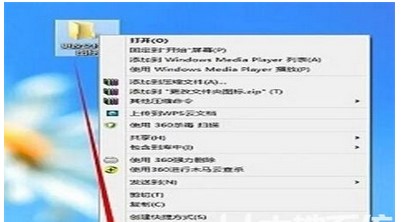 Operation and Maintenance
Operation and Maintenance Windows Operation and Maintenance
Windows Operation and Maintenance What is an SSL certificate? What are the main types?
What is an SSL certificate? What are the main types?The main SSL certificate types are: domain name verification (DV), domain name verification using wildcards (DV), organization verification (OV), and extended verification (EV). This article will introduce these types of SSL certificates to let everyone understand what SSL certificates are and what they are used for. Let’s start with the specific content, I hope it will be helpful to everyone.

What is an SSL certificate? what's the effect?
An SSL certificate (also known as a "digital certificate") is a small data file that digitally binds an encryption key to an organization's details. When it is installed on a web server, it activates the padlock and https protocols and allows the creation of a secure connection from the web server to the browser.
SSL certificate solves the trust problem of netizens logging into the website. Netizens can easily identify whether the website is protected and safe through the SSL certificate.
The SSL certificate is installed on the web server and can provide two functions:
1. Verify the identity of the website (this can ensure that visitors will not be on a fake website )
2. Encrypt the data being transmitted
Information bound to the SSL certificate:
1. Domain name, server name or host name.
2. Organizational identity (i.e. company name) and location.
4 main types of SSL certificates
SSL certificates are provided by certificate authorities (CA) and are classified differently according to functions and brands. , can be mainly divided into the following types:
1. Domain name verification type (DV):
CA will check the applicant’s right to use a specific domain name and needs to verify the website’s Authenticity, issuing certificates and verifying ownership.
This type of certificate has a general trust level and a normal lock mark. Company identifying information is not censored and no information is displayed other than encrypted information within the secure site seal. This is a very basic verification, suitable for individual developers and personal websites.

2. Domain name verification (DV) using wildcards:
DV is also called a pan-domain name certificate, allowing SSL coverage Subdomain, that is, it can be applied to multiple subdomains at the same time; and the cost increases exponentially. Wildcards are not available for OV and EV.
3. Organization Verification Type (OV):
The identity of the organization is verified by the CA and will also be displayed in the browser next to "https://" Company Name. When clicking on the Secure Site Seal, additional vetted company information is displayed to customers, increasing visibility of the people behind the site and associated enhanced trust. The organization name also appears in the certificate under the ON field.

#In actual existence, it is usually adopted by e-commerce companies with online stores.
4. Extended Validation (EV):
EV is the most secure certificate, which can not only verify domain names and organizations, but also verify legal status. The CA will check the applicant's authority to use a specific domain name and conduct a thorough organizational review. The issuance process of EV SSL certificates is strictly defined in the EV Guidelines.

Businesses and businesses should pursue these to gain ultimate trust.
Summary: The above is the entire content of this article, I hope it will be helpful to everyone's study.
The above is the detailed content of What is an SSL certificate? What are the main types?. For more information, please follow other related articles on the PHP Chinese website!
 Redis作为缓存数据库的数据压缩与加密方案Jun 21, 2023 am 08:48 AM
Redis作为缓存数据库的数据压缩与加密方案Jun 21, 2023 am 08:48 AMRedis作为一款开源的内存缓存数据库,在应用开发中极度广泛。其强大、高效的性能优势,使得其成为了最常用的缓存数据库之一。然而,在某些特殊场景下,由于数据量过大或安全性需要,我们需要对Redis数据进行压缩和加密处理。本文将从Redis的数据压缩和加密两方面入手,探讨Redis作为缓存数据库在实际应用中的数据压缩与加密方案。一、Redis数据压缩方案Re
 如何使用Nginx进行SSL证书的动态加载和更新Aug 02, 2023 am 09:05 AM
如何使用Nginx进行SSL证书的动态加载和更新Aug 02, 2023 am 09:05 AM如何使用Nginx进行SSL证书的动态加载和更新概述:在现代互联网的环境中,保护用户数据的安全性至关重要。其中,使用SSL/TLS证书对Web服务器进行加密通信是一种常见的方式。然而,传统的方式需要手动修改Nginx配置文件并重新加载服务器,这样会导致网站在证书更新时出现停机时间。本文将介绍如何使用Nginx模块和脚本实现SSL证书的动态加载和更新,以提高网
 如何在 Windows 11 上加密文件和文件夹May 03, 2023 pm 06:46 PM
如何在 Windows 11 上加密文件和文件夹May 03, 2023 pm 06:46 PM在Windows11上加密文件和文件夹与WindowsBitLocker一样,EFS加密可用于加密您PC上最重要的文件。使用内置加密非常简单,而且触手可及。此外,由于EFS与您的用户帐户相关联,我们将向您展示如何将加密密钥备份到安全位置,这样您就永远不会失去对文件和文件夹的访问权限。注意:要使用EFS,您的PC必须运行Windows11专业版、企业版或教育版。EFS加密在Windows11家庭版上不可用。要加密充满文件的文件夹或单个文件,请使用以下步骤:
 如何使用 OpenSSL 生成 MySQL SSL 证书Sep 09, 2023 pm 02:12 PM
如何使用 OpenSSL 生成 MySQL SSL 证书Sep 09, 2023 pm 02:12 PM如何使用OpenSSL生成MySQLSSL证书简介:MySQL是一种广泛应用的关系型数据库系统,在实际生产环境中使用SSL(SecureSocketsLayer)协议进行加密通信是非常重要的。本文将介绍如何使用OpenSSL工具生成MySQLSSL证书,并提供相应的代码示例。步骤:安装OpenSSL:首先,确保计算机上已安装O
 PHP实现SHA加密技术Jun 18, 2023 pm 02:51 PM
PHP实现SHA加密技术Jun 18, 2023 pm 02:51 PMSHA(SecureHashAlgorithm)加密技术是一种常用的安全加密算法。在PHP开发中,SHA加密技术通常用于加密账户密码以及保护敏感数据。本文将介绍如何在PHP中实现SHA加密技术。SHA算法简介SHA算法是一种信息摘要算法,通常用于数据的完整性保护和身份验证。SHA算法的主要作用是将任意长度的消息转换为一个固定长度的消息摘要(即哈希值),通
 windows10家庭版如何加密文件夹Jul 12, 2023 pm 08:33 PM
windows10家庭版如何加密文件夹Jul 12, 2023 pm 08:33 PMwindows10家庭版如何加密文件夹呢,加密文件夹这个功能一般客户没有使用,但是如果想要设定的话也是可行的,首先在想要加密的文件夹中右键属性进到高级,然后选择缩小加密属性,加密内容维护数据,下面就是具体的windows10家庭版如何加密文件夹方式介绍,大家如果想要学会的话就接着往下看。windows10家庭版如何加密文件夹1.最先,先找到想要加密的文件夹,然后用鼠标右键文件夹,在弹出的菜单中选择底部的“属性”选项,点击查看;2.随后,将打开文件的属性窗口,点击窗口里的“高级”按键进到;3.接着
 如何在IIS上安装SSL证书并解决PHP无法获取数据的问题Mar 09, 2024 pm 05:09 PM
如何在IIS上安装SSL证书并解决PHP无法获取数据的问题Mar 09, 2024 pm 05:09 PM在IIS上安装SSL证书并解决PHP无法获取数据的问题在网站开发中,使用SSL证书来保障数据传输的安全是非常重要的。而在Windows平台上,IIS(InternetInformationServices)是常用的Web服务器软件,本文将介绍如何在IIS上安装SSL证书以及解决PHP无法获取数据的问题。1.安装SSL证书1.1购买SSL证书,通常会得
 如何进行代码授权和加密保护?Jun 12, 2023 am 09:33 AM
如何进行代码授权和加密保护?Jun 12, 2023 am 09:33 AM在当前信息化时代,网络上存在着大量的软件、程序和代码文件,其中有不少代码是需要被保护的,以避免被盗版或恶意利用,同时也有些代码需要进行授权以获得经济收益。那么,问题就来了:如何进行代码授权和加密保护呢?一、代码授权代码授权是指在一定的条件下,授予使用或修改、发布软件或程序源代码的权利。此时,程序开发者作为版权人,需要明确在何种情况下允许其他人使用代码、以何


Hot AI Tools

Undresser.AI Undress
AI-powered app for creating realistic nude photos

AI Clothes Remover
Online AI tool for removing clothes from photos.

Undress AI Tool
Undress images for free

Clothoff.io
AI clothes remover

AI Hentai Generator
Generate AI Hentai for free.

Hot Article

Hot Tools

SublimeText3 Mac version
God-level code editing software (SublimeText3)

SublimeText3 Linux new version
SublimeText3 Linux latest version

SecLists
SecLists is the ultimate security tester's companion. It is a collection of various types of lists that are frequently used during security assessments, all in one place. SecLists helps make security testing more efficient and productive by conveniently providing all the lists a security tester might need. List types include usernames, passwords, URLs, fuzzing payloads, sensitive data patterns, web shells, and more. The tester can simply pull this repository onto a new test machine and he will have access to every type of list he needs.

WebStorm Mac version
Useful JavaScript development tools

SublimeText3 English version
Recommended: Win version, supports code prompts!





